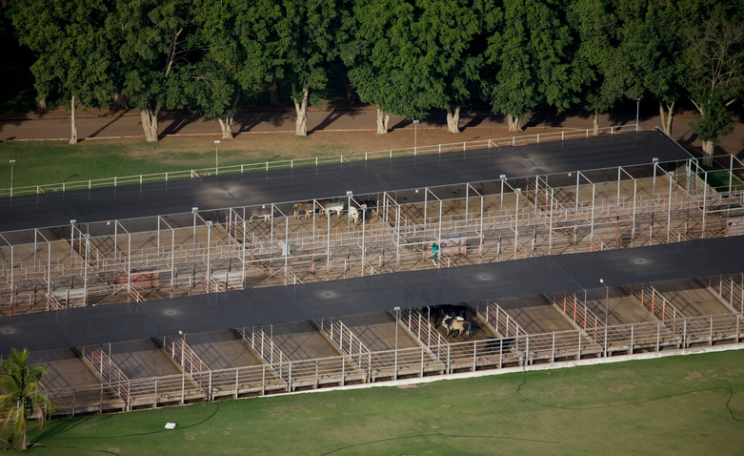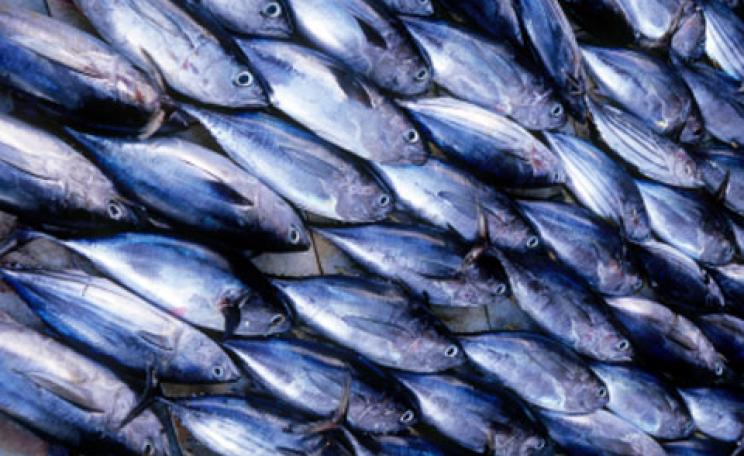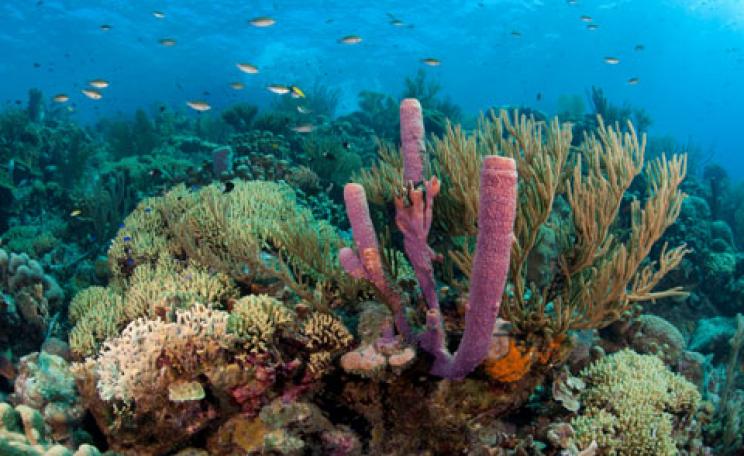A team of scientists has calculated that eating a kilo of beef raised in pastureland carved out of Brazil’s Amazon forest emits the equivalent of a ton of carbon dioxide into the atmosphere, leading to calls for a boycott.
'This is shocking,' says Andre Giacini de Freitas, a Brazilian who is president of the Forest Stewardship Council, the world’s leading green label for forest products. 'We need to shut down markets for products made with unacceptable practices like deforestation.'
'Supermarkets need to stop selling Brazilian beef now,' adds Tara Garnett, director of the Food Climate Research Network at the University of Surrey. The UK imports 40 per cent of its processed beef (tinned, prepared or cooked) from Brazil. Europe accounts for 14 per cent of Brazil’s exports, preceded by the Middle East (27 per cent) and Russia (23 per cent) .
A Marks and Spencer spokesman said the company sells no Brazilian beef. At Sainsbury’s, spokesman Tom Parker said, 'Like all UK retailers, we have no choice but to source our corned beef from South America, as there are no suitable canning facilities in the EU.' But, he added, 'The Brazilian beef that we use in our canned range and our frozen ready meals and pies makes up less than 1 per cent of the total amount of beef we sell and we are working with our suppliers to switch to British beef.'
To emit a ton of CO2 equivalent greenhouse gases, you’d have to drive a car that uses 10 litres every 100 kilometers for 5,800 km. The findings come at a time Brazil plans to double its beef exports by 2018. At stake is whether or not the goal can be reached without further deforestation.
Export market
Between 1996 and 2006, Brazil’s beef exports rose eight-fold to over two million tons of carcass weight (about 1.4 million tons of edible meat) a year, where it has roughly remained, making it the world’s top beef exporter, in part because large swaths of the Amazonian forests have been burned. About 80 per cent of these areas were turned into low-yield pastureland for Zebu beef originally imported from India that thrive in tropical climates but produce less meat than Western breeds.
Brazil’s cattle sector has become the single largest driver for global deforestation, overtaking palm oil plantations in Asia. Because of it, the country produces more greenhouse gases than India, even though its population is 16 per cent that of India’s.
Christel Cederberg, the leader of the scientific team, says they calculated the carbon footprint of Brazilian beef because no one had done so before. 'Most of these carbon footprint calculations for beef were done in Europe,' she notes.
'When we started getting results, we were really surprised,' says Cederberg, a senior researcher at SIK, the Swedish Institute for Food and Biotechnology in Gothenburg. 'But when you think logically about it, it’s not so strange. You’re destroying one of the most carbon-rich ecosystems in the world to create one of the most inefficient uses of land in agriculture.'
The study was published on Jan 31 in Environmental Science and Technology of Washington, D.C. Brazilian beef has a relatively high carbon footprint even when deforestation is not taken into account: it’s about 40 kg of CO2e per kg of edible meat, compared to averages of 36 kg for the European Union.
That’s because most pastureland contains poor soil and can only support one head of cattle per hectare. The soil is particularly bad in the Amazon - where a constant shower of rain and dead leaves are absent - and it is rapidly exhausted and then abandoned. For every deforested hectare being grazed by a cow, there’s another half-hectare or so on average that is being either used – briefly – to grow soybeans or has been abandoned, creating a so-called secondary forest that is much poorer in carbon, fauna and flora, according to Cederberg.
On top of that, European beef cattle are slaughtered at the age of 16 months or so, usually in conjunction with dairy production, she says. In Brazil, cattle are killed when they are three years old and little dairy is produced, so the yield of food per hectare is one of the lowest in the world.
While about 35 per cent of Brazilian cattle is located in the nine Amazon states, only 6 per cent of the total beef production comes from lands deforested in the last 20 years, says Cederberg.
Carbon footprint
Tesco, which declined to comment for this article, is the only British supermarket chain that analyzes the carbon footprint of some of its foods. It uses the rules of the British Standards Institute, which calls for examining only the emissions caused by growing a particular animal in a particular place. Since most exported Brazilian beef comes from non-deforested pastures, its carbon footprint does not include the carbon produced in burning the forest in other parts of the country or the much lower carbon uptake of deforested land.
'The problem with that,' says Cederberg, 'is that it doesn’t give a true picture of the whole industry.' Here’s why: since Brazilian consumption has been relatively stable in the 96/06 decade, she explains, the growth in production has been driven by the seven-fold increase in exports.
'In order to export the beef it used to consume, Brazil has had to create new supplies for the domestic market, and that’s where the Amazon deforestation comes in,' she says. Thus, the true carbon footprint of a kilo of beef from the southern pampas should be the national average footprint, not the footprint of an animal raised there, she says.
So the team calculated the effects of deforestation into the national production and came up with 62 kg of CO2e per kg of meat. Added to the 40 kg of CO2e per kg for just the methane, nitrous oxide and CO2, the true average footprint of a kilo of Brazilian beef is 103 kg of CO2e, nearly triple the European footprint, she says.
The study’s timing makes it unusually influential. It was published just as the British Standards Institution was undertaking its first revision of the standards for calculating a product’s carbon footprint – the first in the world – that it published in 2008. Known as Publicly Available Specification (PAS) 2050, it originally provided for taking into account land-use changes such as deforestation, but did not define it.
In effect, explains Brian Such, who is in charge of the revision process, it excluded indirect land-use change – say deforestation in one part of a country in order to facilitate beef exports from another part – because there was no internationally accepted methodology for its quantification and the issue was (and continues to be) irrelevant for most products.
Roland Clift, a co-author of the paper on the carbon footprint of Brazilian beef, has been providing arguments to the Steering Group that is revising PAS 2050 for including indirect land-use change in the new PAS, which will be published in April.
'Our argument is that, where it’s clear that the total volume of production couldn’t be achieved without land-use changes like deforestation, they must be treated as associated with the product; so the appropriate figure is the Brazilian average rather than the value specific to the piece of land where that particular piece of meat was pastured,' says Clift, who is Emeritus Professor of Environmental Technology at the Centre for Environmental Strategy at the University of Surrey.
'The 2011 version of PAS 2050 standards will facilitate the inclusion of indirect land-use change for certain sectors where they’re relevant like meat and horticulture,' says Such. 'It’s a natural evolution.'
The International Standards Organization (ISO), which has designed ways to calculate a whole organization’s carbon footprint, is also developing a methodology that will be applicable to specific products and services. There is already a requirement that indirect land-use change be considered for inclusion in carbon footprint studies, once an internationally agreed procedure emerges, Such adds.
Consumer pressure
If both the British and international organizations end up in effect including deforestation in the carbon footprint of Brazilian beef exports, resistance from consumers and environmentalists could add a layer of pressure on the government and the industry to improve yield on existing pastureland and stop deforestation, says the carbon footprint study’s authors.
Meanwhile, the amount of forest cut down each year has fallen to its lowest level since Brazil’s National institute for Space Research started taking and analyzing satellite pictures. After a peak of 29,000 km2 in 1995, it fell to 13,000 km2 in 2008 and 6,400 km2 in 2010, the institute reported in December.
Analysts say this is a result of a combination of factors ranging from government policies to depressed demand after 2008 and to campaigns by environmentalists. Andre Muggiati of the Greenpeace Amazon Campaign says: 'Using the carbon footprint out of the context that deforestation is going down demonizes Brazilian meat in general and does not really help to solve the problem of deforestation.'
He says he’s confident that his country’s meat exports can double even if deforestation ends by 2018, the date that is the goal of his campaign. 'Studies have shown that it’s possible to have not one but three heads of cattle per hectare, so it would be no miracle,' he says.
Luis Fernando Pinto isn’t so sure. An agronomist who heads Imaflora, a Brazilian forest conservation NGO, he agrees that Brazil’s pastureland is so poor that a little improvement would go a long way – things like small amounts or fertilizers or lime and rotating crops and pastures.
'You can divide large pastures into smaller plots and put the cattle in the best ones to feed the cattle so they gain weight faster and can be slaughtered sooner, which would cut the methane they emit through digestion,' he says. 'You could mix legumes with the grasses that dominate our pastures.' But it would cost money.
The main advantage to current low-productivity methods based on deforestation is that they are the cheapest, he says. 'If we maintain this low productivity, it will still be necessary to cut trees.'
A study published in Science a year ago found that 'recent developments finally make feasible the end of deforestation in the Brazilian Amazon, which could result in a 2 to 5 per cent reduction in global carbon emissions.'
However, it would cost between $7 billion and $18 billion, the authors concluded. Without revenue from rich countries, 'Ending deforestation in the Brazilian Amazon in 2020 with less than 20 per cent of the forest cleared would be an extraordinary and extremely difficult achievement, perhaps unique in the history of frontier expansion.'
'It's very unlikely Brazil can double its beef exports without the forest paying a price,' agrees de Freitas, the head of the Forest Stewardship Council. 'Market forces can influence the large producers and the slaughterhouses, but it's much harder to discourage small producers from taking the cheapest route to start cattle farming, which is to burn down forest illegally.'
| READ MORE... | |
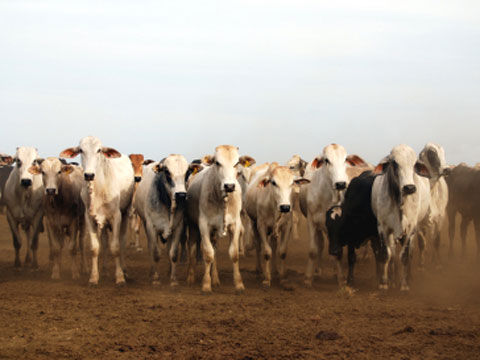 |
NEWS WWF calls for 'scaling up' of beef production to combat deforestation in Brazil In an interview with the Ecologist, WWF Brazil CEO Denise Hamu says increasing productivity can help combat deforestation in the Amazon |
 |
INVESTIGATION Killing fields: the true cost of Europe's cheap meat Cheap meat has become a way of life in much of Europe, but the full price is being paid across Latin America as vast soya plantations and their attendant chemicals lead to poisonings and violence |
 |
NEWS Tesco 'trusts' cattle suppliers involved in Amazon deforestation Despite the lack of traceability in the supply chain, the assurances of cattle producers that they are not involved in the illegal deforestation of the Amazon rainforest is apparently enough for Tesco, a letter to the Guardian reveals |
 |
GREEN LIVING Beef: an interactive buyer's guide Do you know your clod from your foreshin? Learn more about rare, cheap cuts of beef (and why local and well-hung meat is best) in this interactive guide from chef Darina Allen |
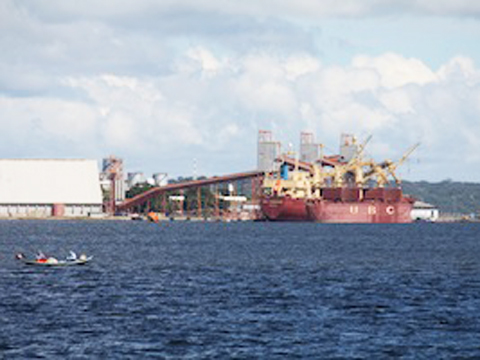 |
SPECIAL CONTENT How Cargill is feeding Europe's meat demands at the expense of the Amazon Europe's demand for cheap meat is been fed by an increasing demand for soya feed from the Amazon but it comes at a cost - deforestation |




